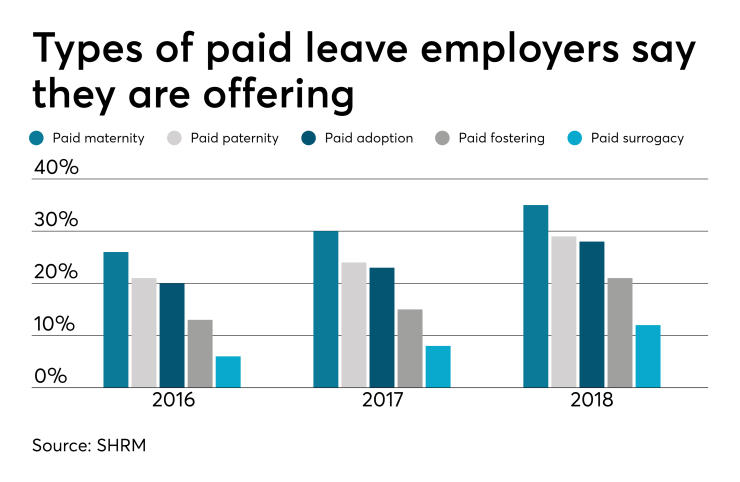Media giant Bloomberg is expanding its fully paid parental leave program to 26 weeks from 18 weeks for primary caregivers, company founder and former New York City mayor Michael Bloomberg announced this week in a global memo to employees.
“With this policy change, we are furthering our commitment to making Bloomberg a great place to work,” the three-term mayor said in the memo. “We recognize that every family is different, so our policies should reflect the needs of each and every colleague — across the world and regardless of gender.”
The new benefit, which takes effect immediately, is gender neutral, a growing focus among employers. Tobacco giant Reynolds American and quick service restaurant chain Noodles & Company have
Under Bloomberg’s updated policy, primary caregivers, regardless of gender, will have 24 weeks full paid leave, plus 10 transition days, meaning the employee will have one day off per week for 10 consecutive weeks immediately following an employee’s return to work.

The policy is only expanded for primary caregivers, the company says. Secondary caregivers will continue to receive four weeks of fully paid leave.
Gender-neutral paid leave policies are not the norm for most organizations, according to data from the Society of Human Resource Management. Leave policies are often still segregated by gender, with mothers and fathers getting different amounts of time off for the arrival of a new child. But, benefits experts say, this tactic doesn’t represent the evolution of family life in the U.S., which includes LGBTQ parents, stay-at-home dads, and career-focused moms who need more flexible time off.
“The prevailing trend we see still today are longer durations for maternity than paternity — typically by a ratio of 3:1,” says benefits adviser Derek Winn of Business Benefits Group. “There are certainly some progressive employers who say, ‘Hey, isn’t bonding time just as important for a father?’ But there is more to it than that.”
As more prospective employees take notice of companies’ paid-time-off benefits, having a gender-neutral leave program can work as a tool to attract and retain new talent. Along with other flexible working benefits — which can include telecommuting and shorter workweeks — a healthy paid-time-off policy encourages greater work-life balance and can result in higher productivity and more engaged employees, according to SHRM data.
The updated policy offers double the average of the communication and finance industries, Bloomberg says, citing data from its gender-equality index. The policy offers 63% more time off than the average tech firm. The average paid leave across industries in the U.S. is 16 weeks at technology companies, 13 weeks in the communications industry and 12 weeks at financial firms, according to Bloomberg.





